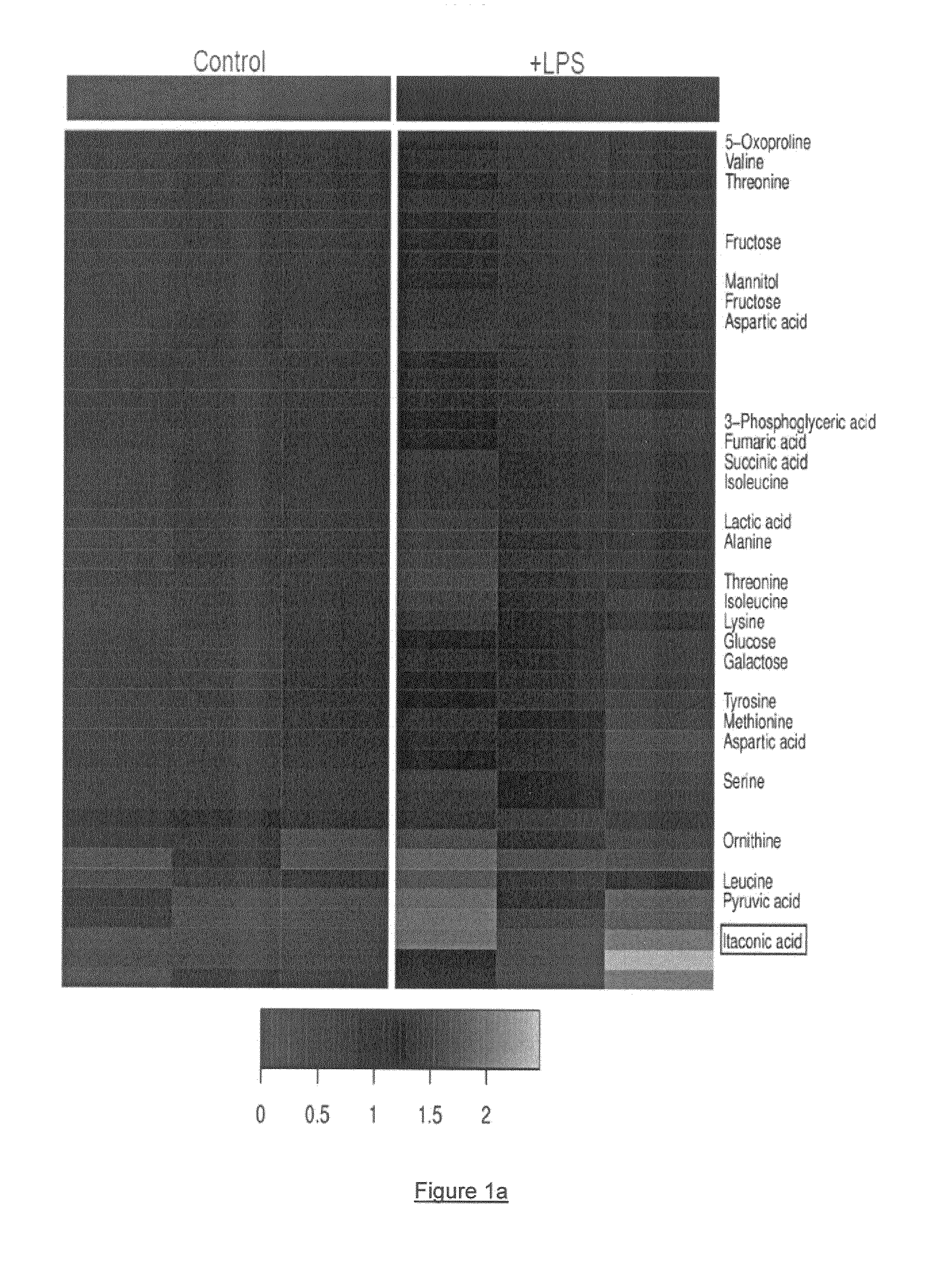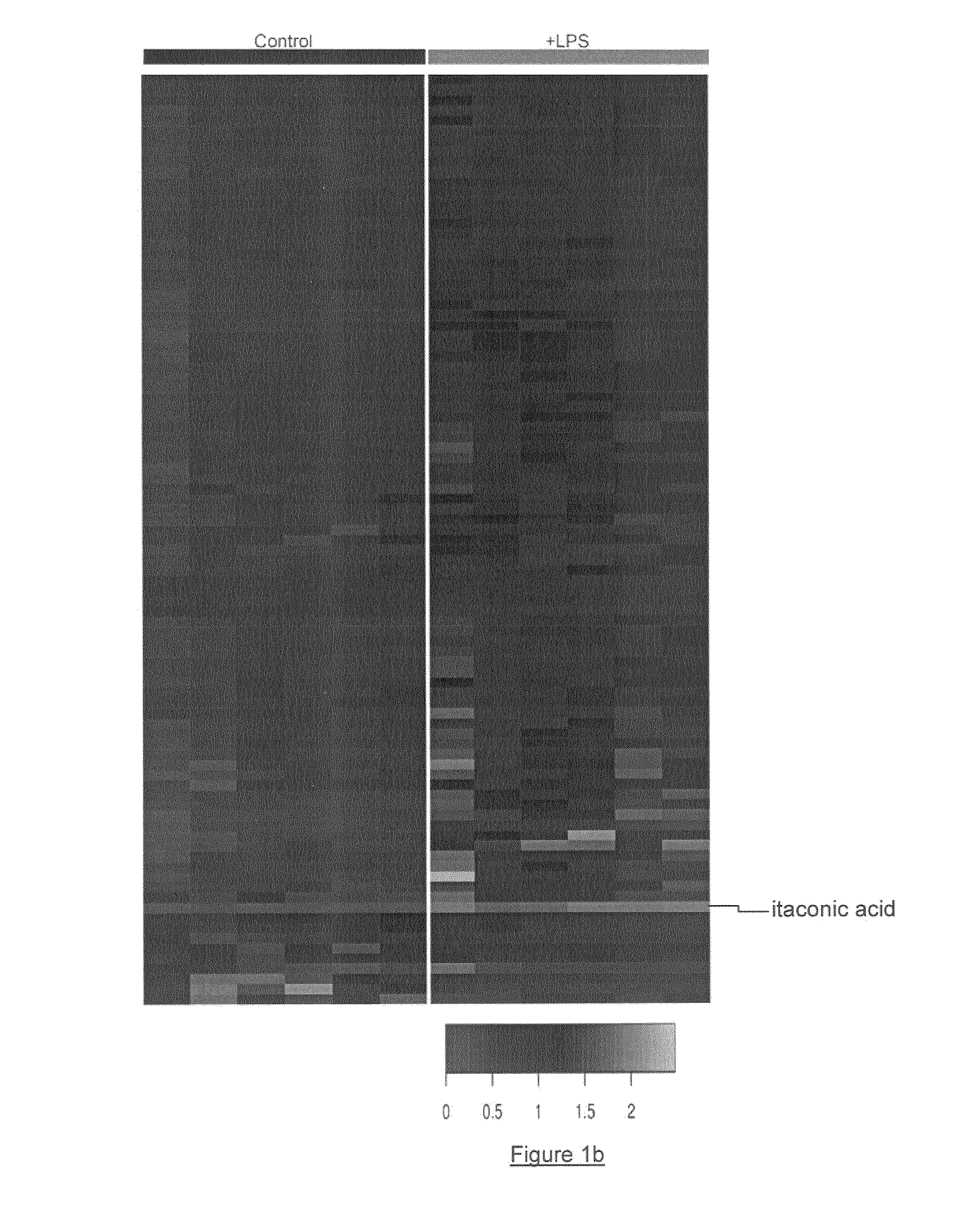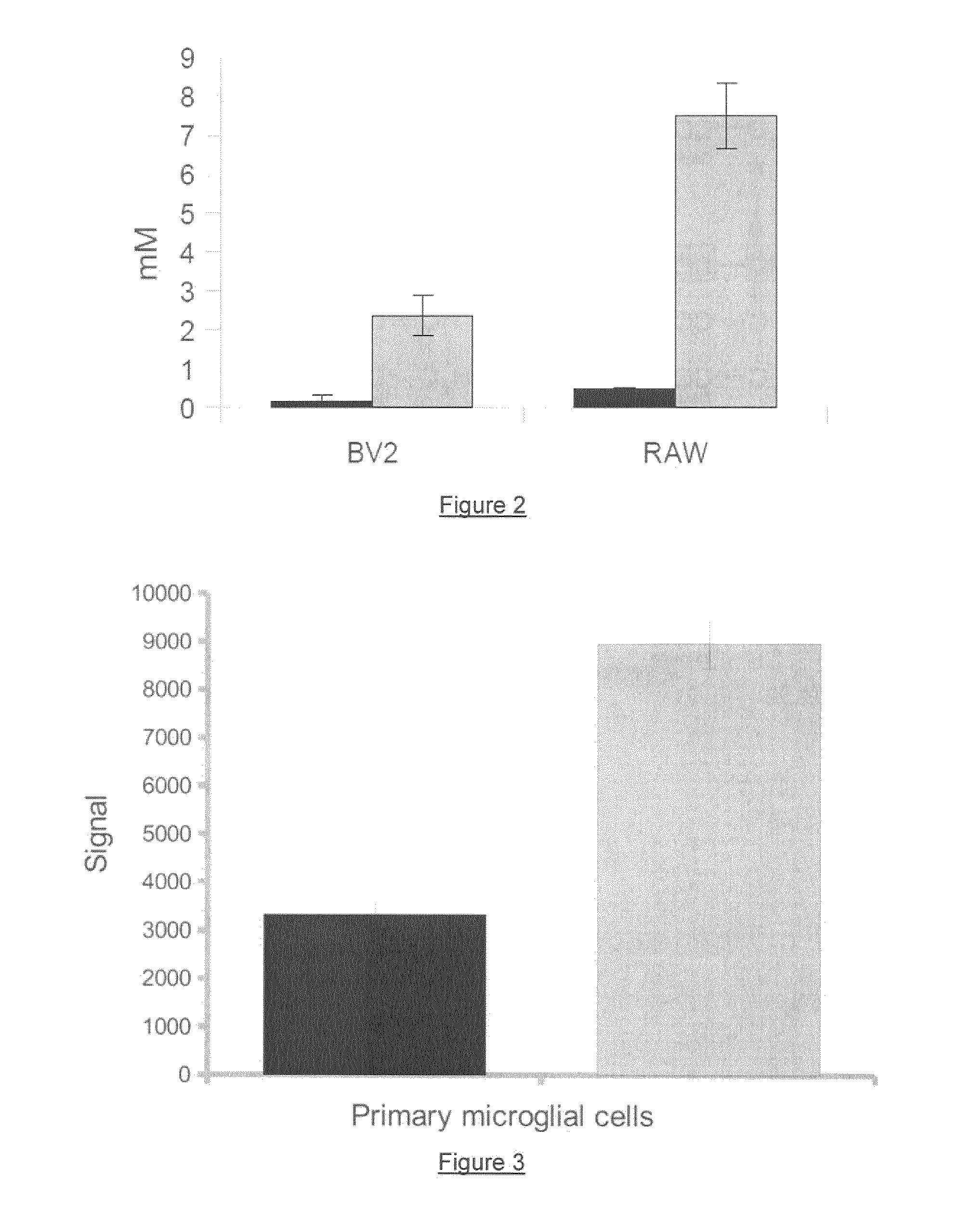Method to predict the presence of inflammation or itaconic acid, irg1 and/or protein irg1 in a subject and pharmaceutical composition for treating or preventing inflammation
- Summary
- Abstract
- Description
- Claims
- Application Information
AI Technical Summary
Benefits of technology
Problems solved by technology
Method used
Image
Examples
examples
[0088]The invention now being generally described, it will be more readily understood by reference to the following examples, which are included merely for the purpose of illustration of certain aspects and embodiments of the present invention, and are not intended to limit the invention.
LEGENDS OF THE FIGURES
[0089]FIG. 1a: Heat map showing 43 differential metabolites in 6 h LPS (10 ng / ml) treated mouse macrophages (RAW264.7 cell line) relative to untreated macrophages (p<0.05).
[0090]FIG. 1b: Heat map showing 91 differential metabolites in RAW264.7 murine macrophages treated for 6 h with LPS (10 ng / ml) relative to untreated macrophages (Welch's t-test, p<0.05).
[0091]FIG. 2: Itaconic acid quantification (mM) in mouse microglia cells (BV2 cell line) and mouse macrophages (RAW264.7 cell line) under 6 h LPS (10 ng / ml) exposure (in black: untreated cells; in grey: LPS treated cells (6 h)).
[0092]FIG. 3: Itaconic acid measurement in mouse primary microglia treated during 6 h with LPS (1 ng...
example i
Identification of Itaconic Acid in Mammalian Cells
[0142]This example describes the presence of itaconic acid in mammalian cells under LPS activation using metabolomics profile of resting and activated macrophage and microglia cells.
[0143]The cells have been lysed with addition of a lysis buffer and submitted to metabolite extraction. Metabolite extraction was performed by addition of a mixture of methanol, water and chloroform. Metabolites were detected by gas chromatography coupled to mass chromatography. Similar extraction and metabolite detection was performed on untreated macrophages. A comparative heat map with a subset of 43 metabolites detected with respect to RAW264.7 cell lines, illustrated in FIG. 1a, demonstrates the presence of itaconic acid in mouse macrophage, and in particular in LPS treated macrophages. A comparative heat map showing 91 differential metabolites in RAW264.7 murine macrophages treated for 6 h with LPS (10 ng / ml) relative to untreated macrophages (Welch...
example ii
[0148]Itaconic Acid Production in the Tricarboxylic Acid (TCA) Cycle
[0149]FIG. 4a describes the suggested pathway of production of itaconic acid in Aspergillus terreus. Atoms coming from gycolysis are marked. The decarboxylation of cis-aconitate to itaconate is done by the cis-aconitate decarboxylase. From this suggested pathway, itaconate can only contain one labeled carbon if produced in the first round of the TCA cycle (FIG. 4b).
[0150]To test if itaconic acid production follows a similar pathway in mammal cells, labeled glucose (with labeled carbon) was used as tracer in RAW264.7 macrophages. Therefore, LPS-activated RAW264.7 macrophages were incubated with uniformly 13C-labeled glucose (U-13C6). Citrate synthase catalyzes the transfer of two labeled carbon atoms from acetyl-CoA to oxaloacetate resulting in M2 cis-aconitate isotopologues. If the decarboxylation is performed by a CAD homologue, the first carbon atom of the molecule will be decarboxylated resulting in M1 isotopolog...
PUM
 Login to View More
Login to View More Abstract
Description
Claims
Application Information
 Login to View More
Login to View More - R&D
- Intellectual Property
- Life Sciences
- Materials
- Tech Scout
- Unparalleled Data Quality
- Higher Quality Content
- 60% Fewer Hallucinations
Browse by: Latest US Patents, China's latest patents, Technical Efficacy Thesaurus, Application Domain, Technology Topic, Popular Technical Reports.
© 2025 PatSnap. All rights reserved.Legal|Privacy policy|Modern Slavery Act Transparency Statement|Sitemap|About US| Contact US: help@patsnap.com



